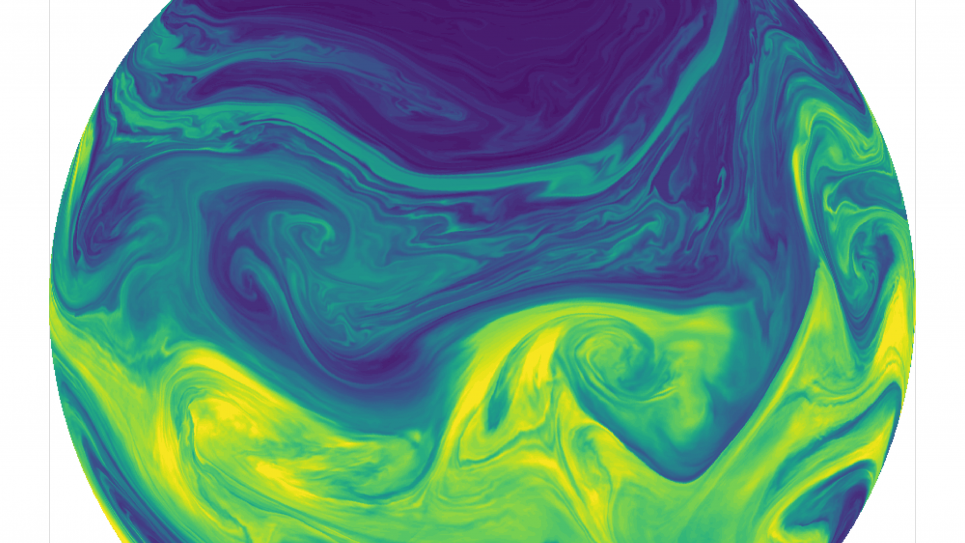
Turbulent eddies in water vapor at 500 mb from a high-resolution simulation of baroclinic instability using E3SM's nonhydrostatic dynamical core. Image: Mark Taylor, Sandia National Laboratories
This project supports the Energy Exascale Earth System Model, a multi-laboratory project driven by three grand challenge questions, two of which are the focus of this project: (1) How will more realistic portrayals of the water cycle’s important features affect river flow and associated freshwater supplies at the watershed scale? (2) In cryosphere systems, what are the impacts of ocean-ice interactions on Antarctic ice shelf melting and the implications for ice sheet dynamics and sea level rise?
This INCITE project supports the Energy Exascale Earth System Model (E3SM) model, a multi-laboratory project developing a leading-edge climate and Earth system and driven by three grand challenge questions, two of which are the focus of this project as they can be answered using the E3SM v1 model: (1) How will more realistic portrayals of the water cycle’s important features (resolution, clouds, aerosols, snowpack, river routing, land use) affect river flow and associated freshwater supplies at the watershed scale? (2) In cryosphere systems, what are the impacts of ocean-ice interactions on Antarctic ice shelf melting and the implications for ice sheet dynamics and sea level rise?
For the water cycle question, the team’s objective is to simulate changes in the hydrological cycle with a specific focus on precipitation and surface water in orographically complex regions, such as the western United States and Amazon headwaters. For the cryosphere question, the simulations assess the potential for significant increases in sub-ice shelf melt rates in response to past, ongoing, and future changes in global climate (and associated regional changes in the Southern Ocean).